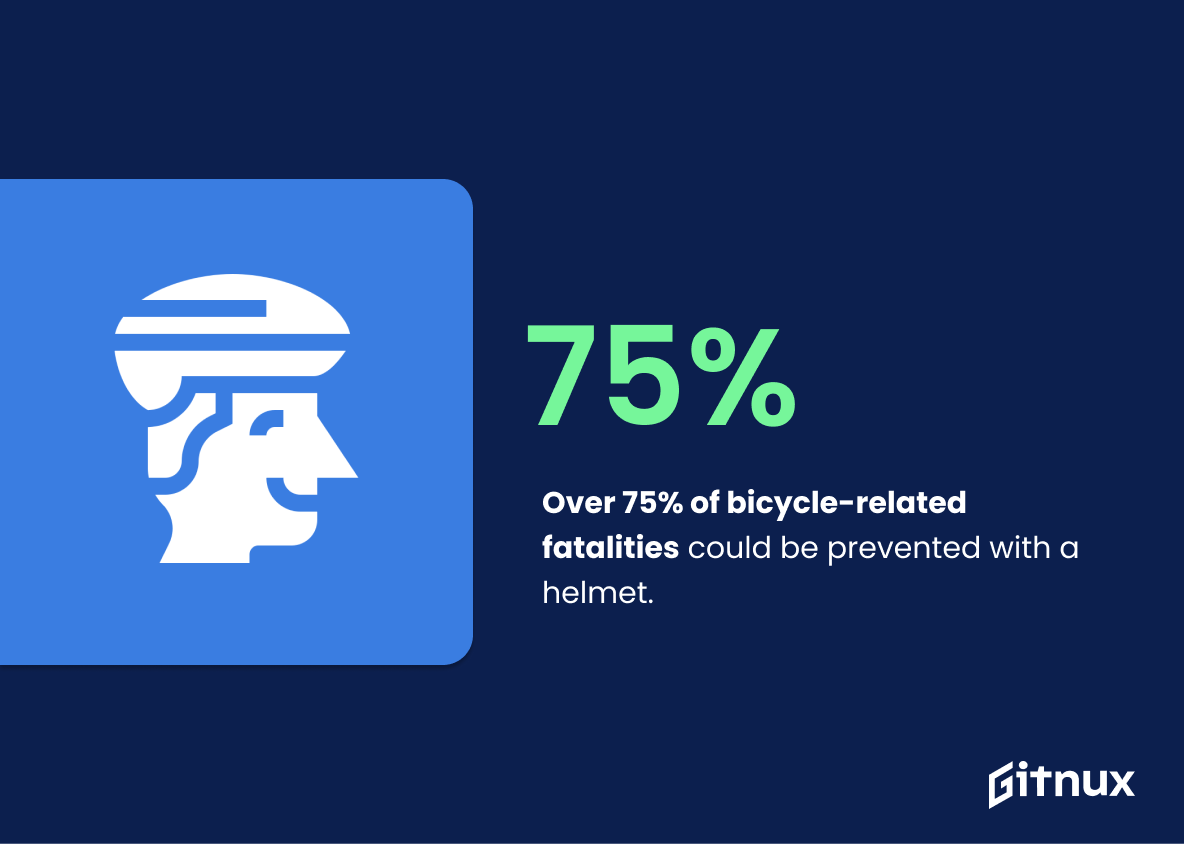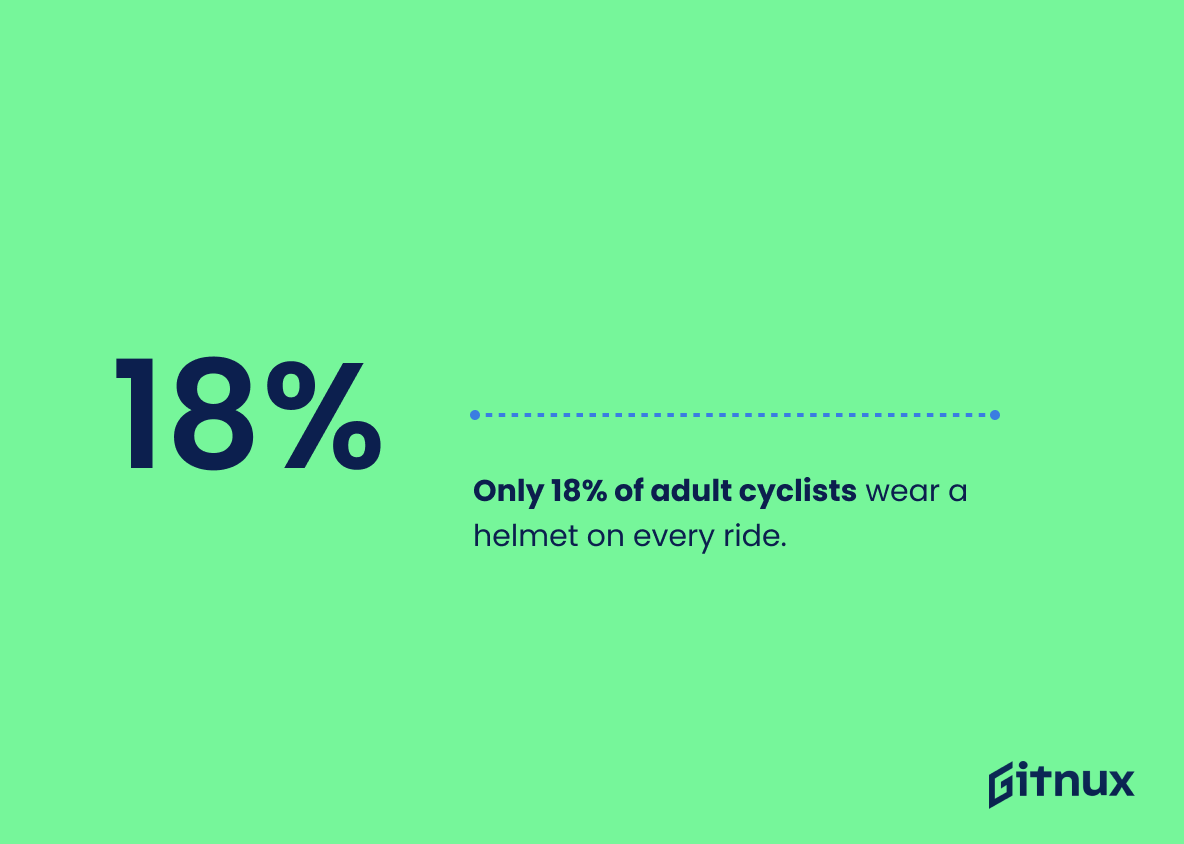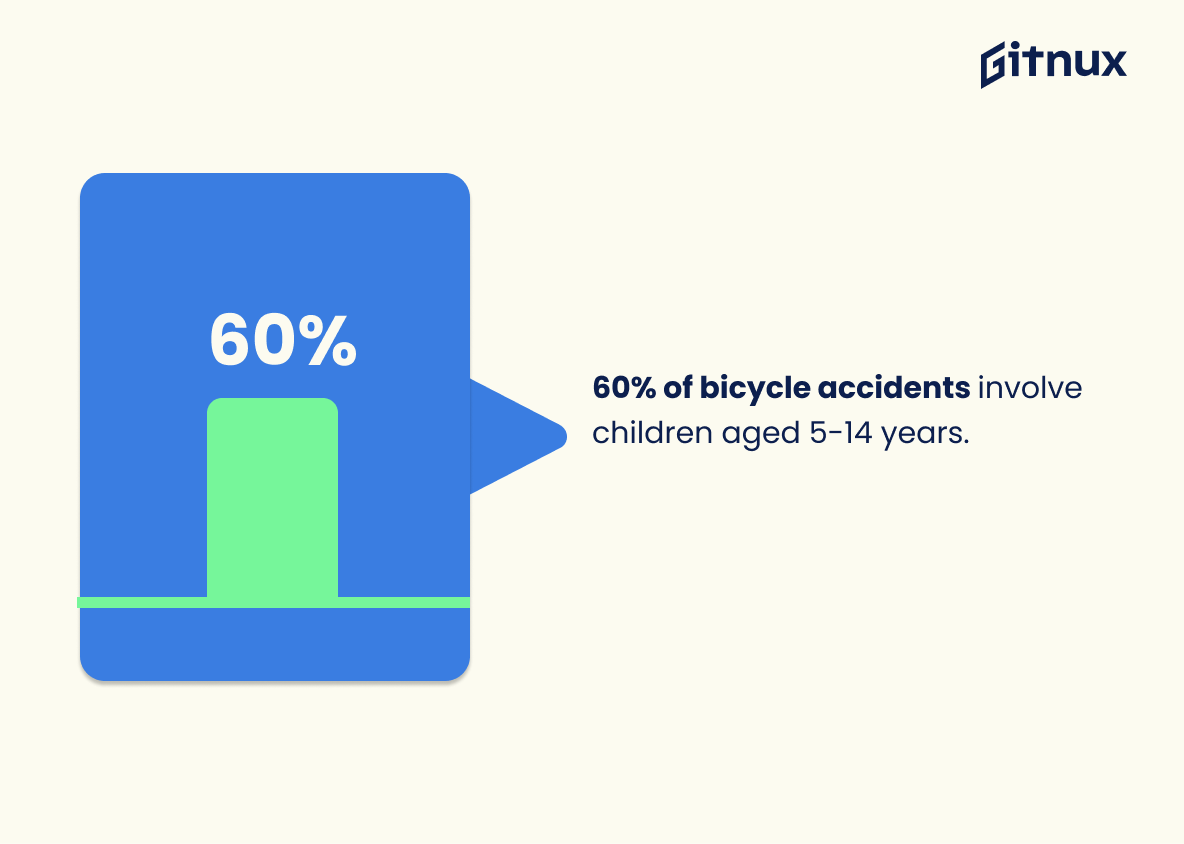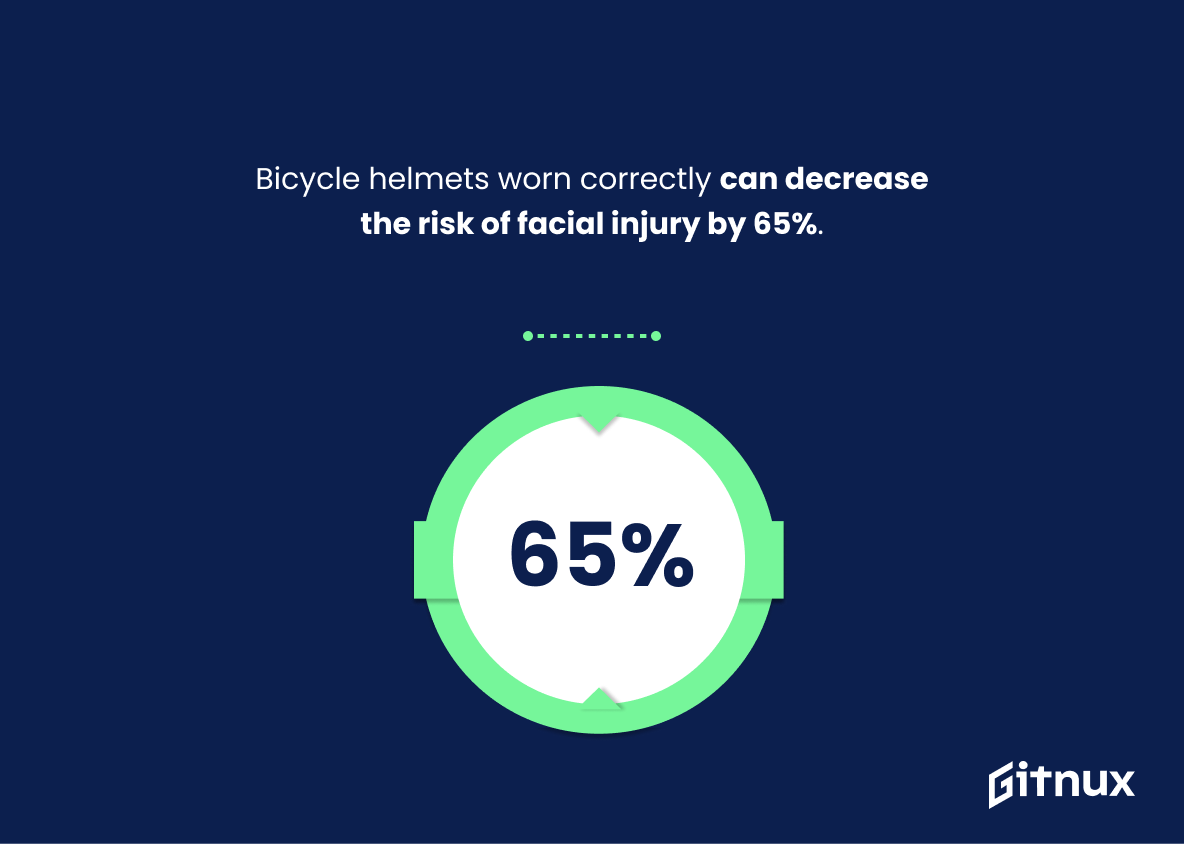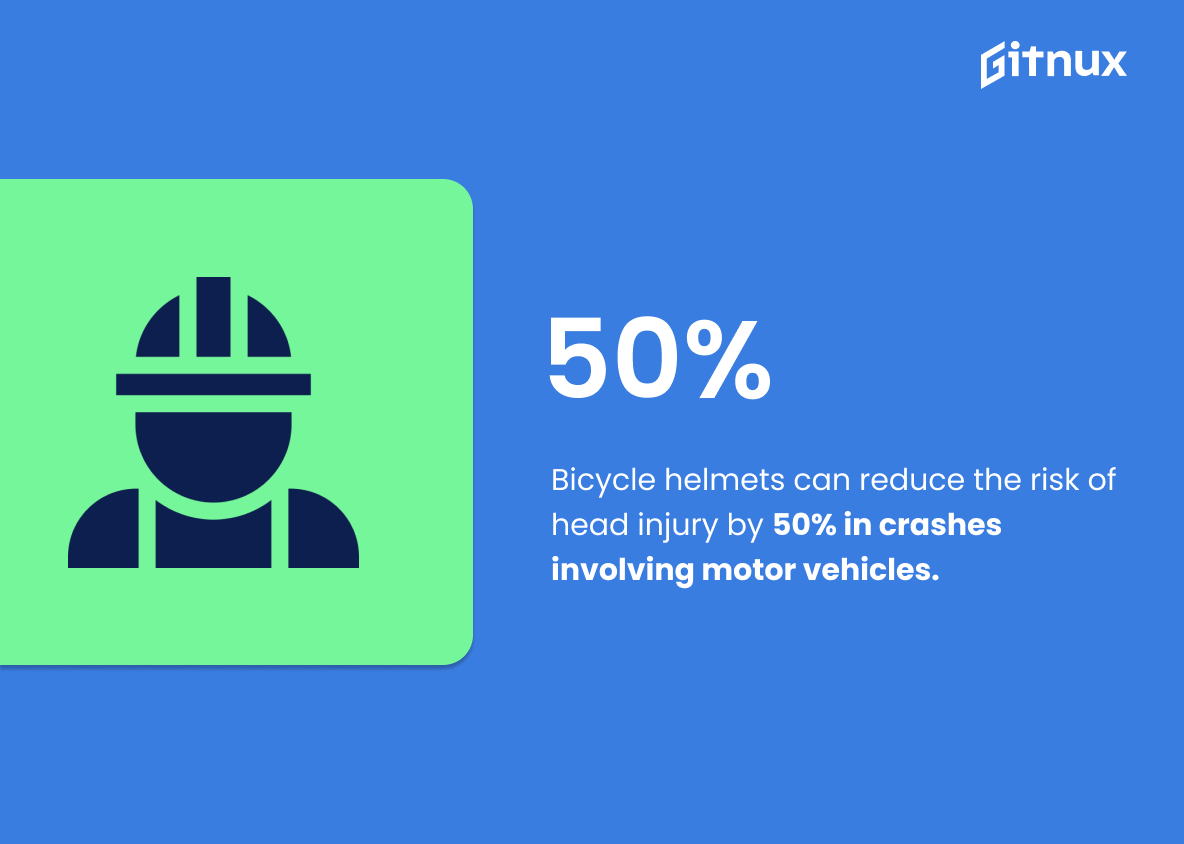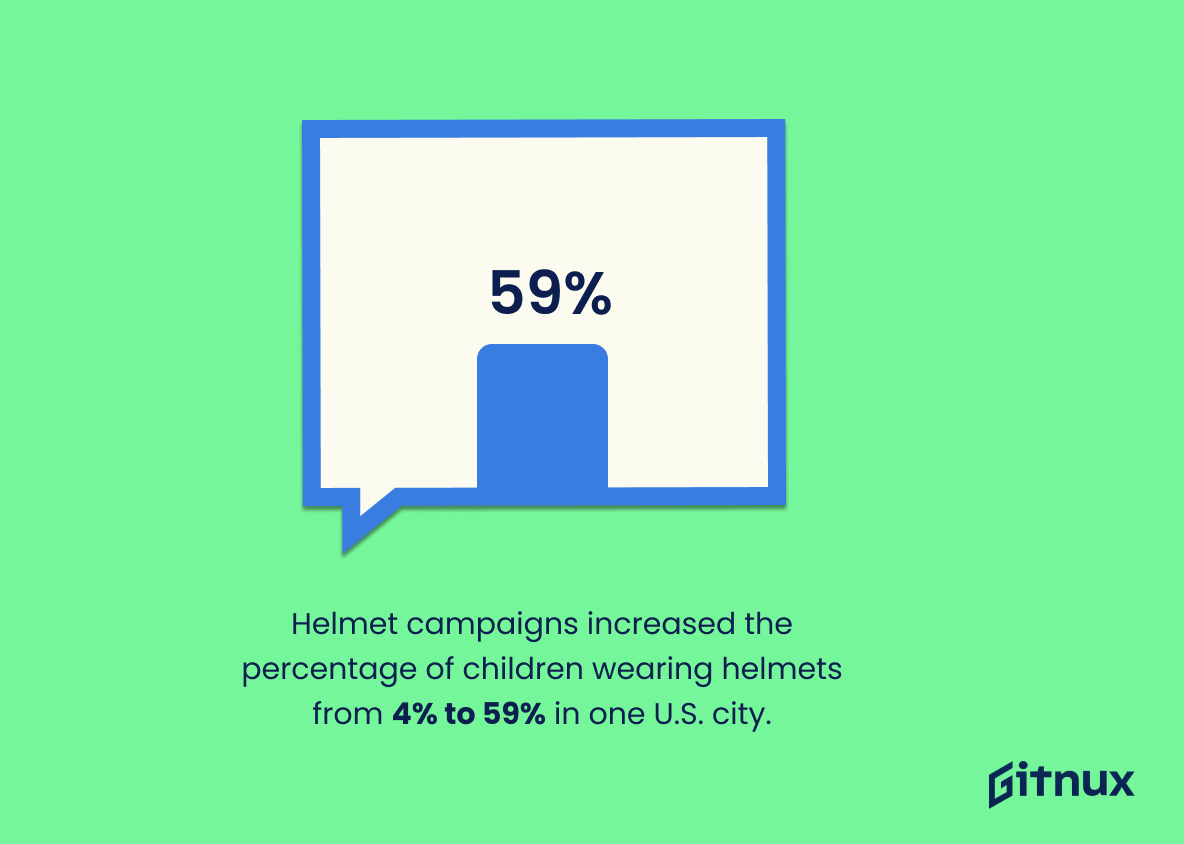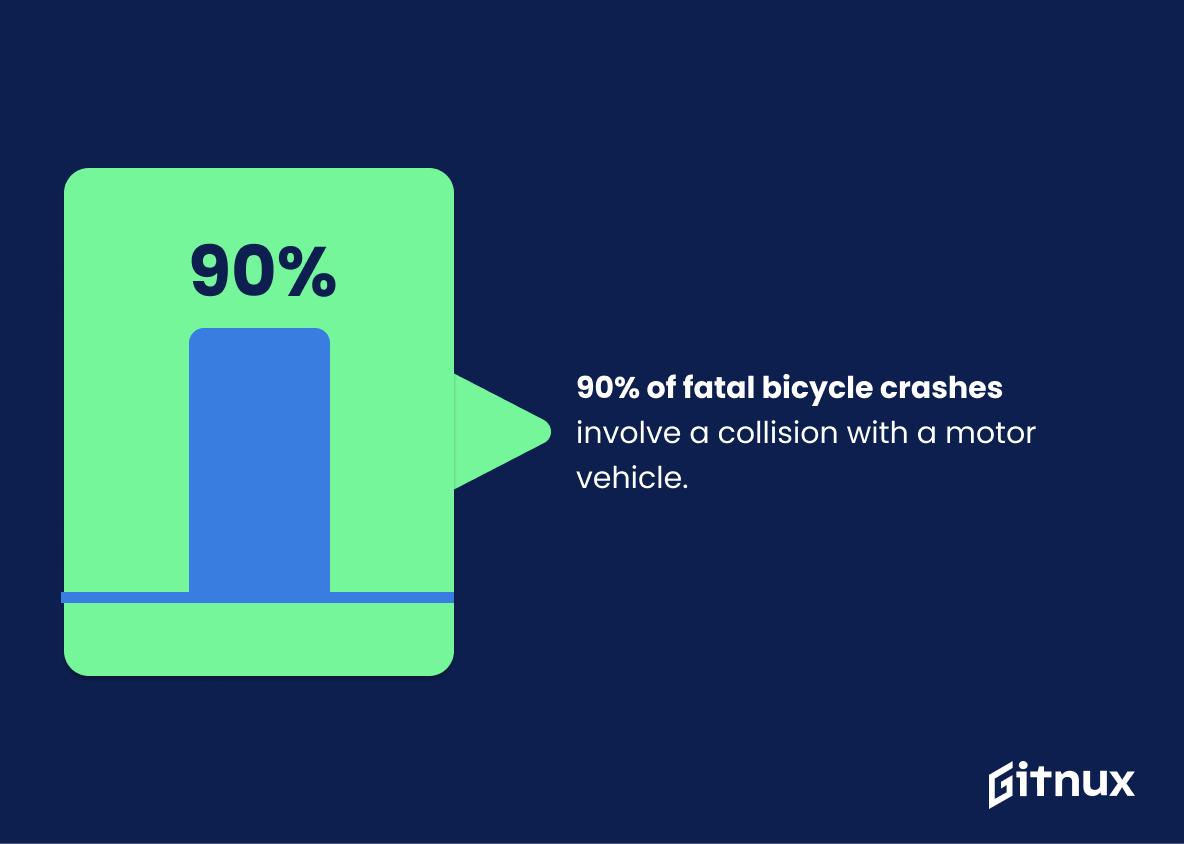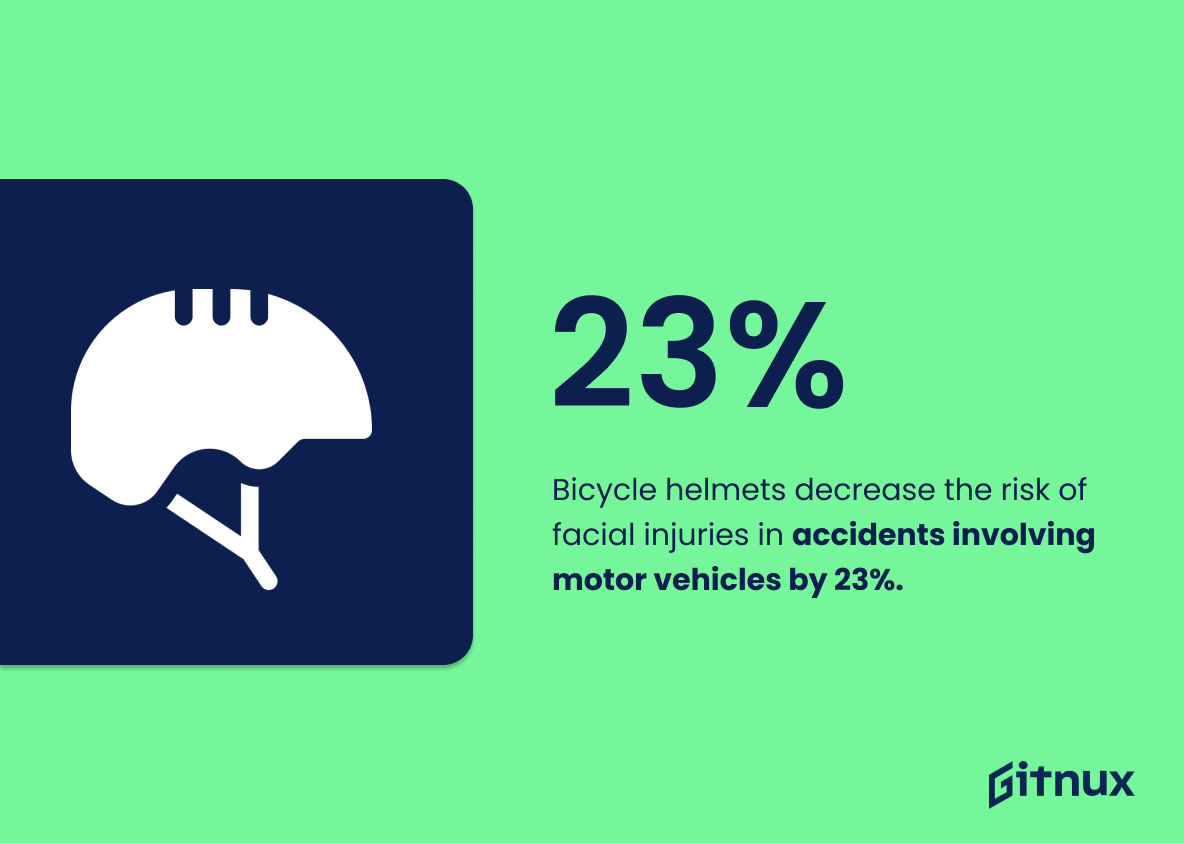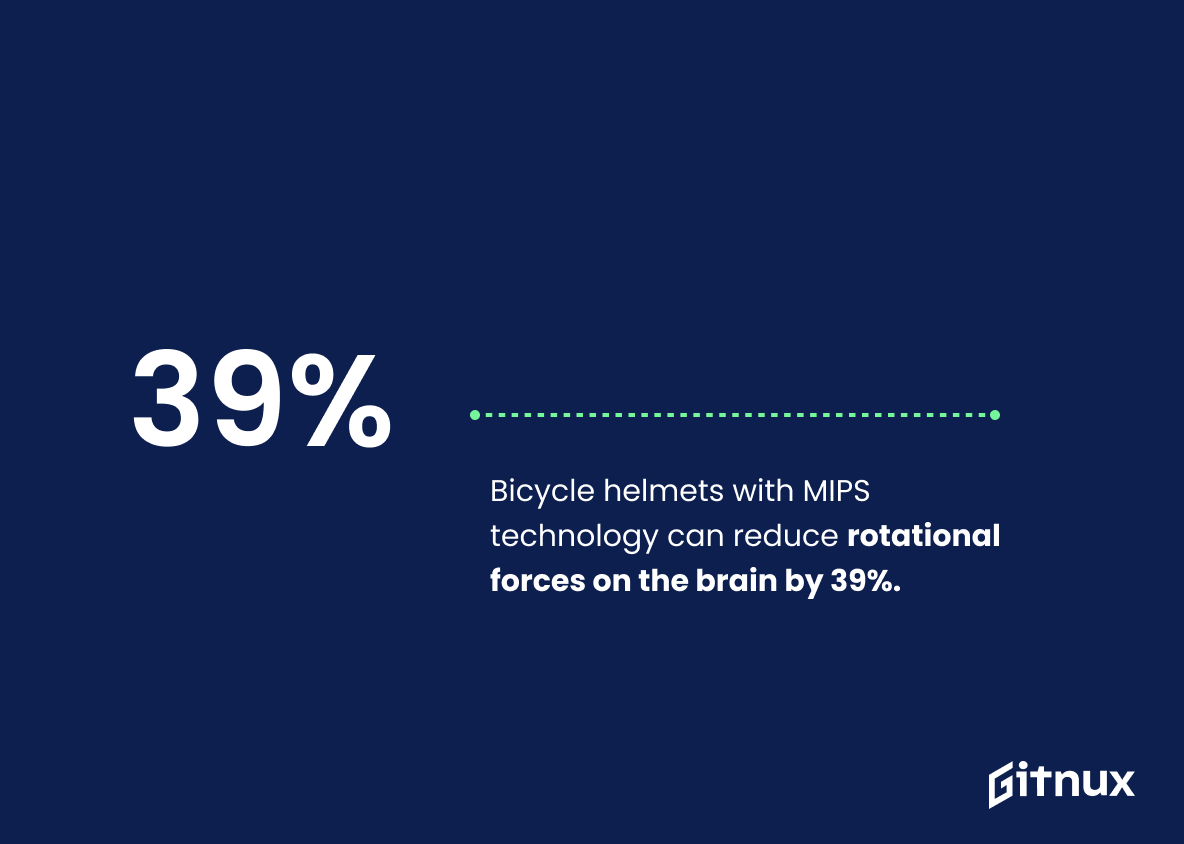Bicycle helmets are an essential piece of safety equipment for cyclists, and the statistics on their effectiveness in preventing head injuries is staggering. Studies have shown that bicycle helmet use can reduce the risk of head injury by 45-85%, serious head injury by 69%, and severe traumatic brain injury (TBI) in bicycle crashes by 74%. In addition, wearing a properly fitted helmet while cycling reduces the risk of a head injury by up to 90% in severe crashes.
Helmet laws vary from state to state; 21 states and the District of Columbia currently have mandatory bicycle helmet laws for children. Despite this, only 18% of adult cyclists wear a helmet on every ride according to recent studies. However, there has been progress over time: Helmet use among cyclists in the U.S., which was at 18% back 1991, increased to 50% as recently as 2018.
The importance of bike helmets cannot be understated when it comes to protecting young riders – 60 percentof all fatal or nonfatal bicyclist injuries involve children aged 5–14 years old – but even adults should take note: 97 percentof those who died while riding bicycles were not wearing helmets during their accidents. Fortunately fatalities among child cyclists declined 64 percentfrom 1999 through 2020 due largely thanks improved awareness about proper protective gear such as bike helmets with MIPS technology which can reduce rotational forces on your brainby 39%.
In conclusion, these facts demonstrate just how important it is for everyone – regardless age –to always wear a correctly fitting bike helment whenever they go out cycling if we want our roads safer place for everyone involved.
This statistic is a powerful reminder of the importance of wearing a bicycle helmet. It demonstrates that the use of a helmet can drastically reduce the risk of head injury, making it a vital piece of safety equipment for cyclists. It is a clear indication that bicycle helmet safety should be taken seriously and that wearing a helmet can make a huge difference in protecting cyclists from serious injury.
Helmet use reduces the risk of serious head injury by 69%.
This statistic is a powerful reminder of the importance of wearing a helmet when cycling. It clearly demonstrates that helmets can drastically reduce the risk of serious head injury, making them an essential piece of safety equipment for cyclists.
Bicycle Helmet Safety Statistics Overview
Over 75% of bicycle-related fatalities could be prevented with a helmet.
This statistic is a powerful reminder of the importance of wearing a helmet when cycling. It highlights the fact that the majority of bicycle-related fatalities could be avoided if cyclists took the necessary precautions and wore a helmet. This statistic serves as a stark warning to cyclists of the potential consequences of not wearing a helmet, and should be taken seriously.
21 states and the District of Columbia have mandatory bicycle helmet laws for children.
This statistic is a powerful reminder of the importance of bicycle helmet safety. It shows that a significant number of states have taken the initiative to protect their children by enacting laws that require them to wear helmets while riding. This demonstrates the commitment of these states to the safety of their citizens and serves as an example for other states to follow.
Only 18% of adult cyclists wear a helmet on every ride.
This statistic is a stark reminder of the importance of helmet safety. With such a low percentage of adult cyclists wearing a helmet on every ride, it is clear that more needs to be done to ensure that cyclists are taking the necessary precautions to protect themselves.
60% of bicycle accidents involve children aged 5-14 years.
This statistic is a stark reminder of the importance of bicycle helmet safety, particularly for children aged 5-14 years. It highlights the need for parents and guardians to ensure that their children are wearing helmets when cycling, as this could be the difference between life and death in the event of an accident.
Bicycle helmets worn correctly can decrease the risk of facial injury by 65%.
This statistic is a powerful reminder of the importance of wearing a bicycle helmet correctly. It highlights the fact that wearing a helmet correctly can drastically reduce the risk of facial injury, making it a crucial part of any cyclist’s safety routine. This statistic is a great starting point for a blog post about bicycle helmet safety, as it emphasizes the importance of wearing a helmet and the potential consequences of not doing so.
Bicycle helmets can reduce the risk of head injury by 50% in crashes involving motor vehicles.
This statistic is a powerful reminder of the importance of wearing a bicycle helmet when riding. It highlights the fact that helmets can drastically reduce the risk of head injury in the event of a crash involving a motor vehicle, making them an essential piece of safety equipment for cyclists. By emphasizing this statistic, a blog post about Bicycle Helmet Safety Statistics can help to raise awareness of the importance of wearing a helmet and encourage more people to do so.
Helmet campaigns increased the percentage of children wearing helmets from 4% to 59% in one U.S. city.
This statistic is a testament to the effectiveness of helmet campaigns in promoting bicycle helmet safety. It demonstrates that when people are made aware of the importance of wearing helmets, they are more likely to take the necessary steps to protect themselves. This is an encouraging sign that, with the right education and awareness, we can make a real difference in the safety of cyclists.
97% of cyclists who died in accidents in 2016 were not wearing a helmet.
This statistic is a stark reminder of the importance of wearing a helmet when cycling. It serves as a powerful illustration of the potential consequences of not wearing a helmet, and should be a wake-up call to cyclists everywhere to take the necessary precautions to protect themselves.
90% of fatal bicycle crashes involve a collision with a motor vehicle.
This statistic is a stark reminder of the importance of bicycle helmet safety. It highlights the fact that the majority of fatal bicycle crashes are caused by collisions with motor vehicles, and that wearing a helmet can be the difference between life and death in these situations. It serves as a powerful reminder that cyclists should always wear a helmet when riding, as it could save their life in the event of a crash.
Wearing a helmet while cycling reduces the risk of a head injury by 60% in severe crashes.
This statistic is a powerful reminder of the importance of wearing a helmet while cycling. It highlights the fact that helmets can be a life-saving piece of equipment, reducing the risk of a head injury by a staggering 60% in severe crashes. This statistic is a powerful reminder of the importance of taking safety precautions while cycling, and should be taken into consideration when discussing bicycle helmet safety.
Bicycle helmets decrease the risk of facial injuries in accidents involving motor vehicles by 23%.
This statistic is a powerful reminder of the importance of wearing a bicycle helmet when riding a bike. It demonstrates that wearing a helmet can significantly reduce the risk of facial injuries in the event of an accident involving a motor vehicle, making it a vital piece of safety equipment for cyclists.
Approximately 300,000 children visit the emergency room each year due to bicycle-related injuries, and at least 10,000 have injuries requiring hospitalization.
This statistic serves as a stark reminder of the importance of bicycle helmet safety. It highlights the fact that bicycle-related injuries are a serious issue, with thousands of children requiring hospitalization each year. It is a call to action for parents and cyclists alike to take the necessary steps to ensure their safety on the roads.
Bicycle helmets with MIPS technology can reduce rotational forces on the brain by 39%.
This statistic is a powerful reminder of the importance of bicycle helmets with MIPS technology in protecting riders from rotational forces on the brain. By reducing these forces by 39%, riders can be assured that their helmets are providing them with the best possible protection against head injuries. This is an invaluable statistic for anyone looking to stay safe while cycling.
A properly fitted bicycle helmet can reduce the risk of head injuries by up to 90%.
This statistic is a powerful reminder of the importance of wearing a properly fitted bicycle helmet. It highlights the fact that wearing a helmet can drastically reduce the risk of head injuries, making it a vital piece of safety equipment for cyclists. This statistic is a crucial part of any discussion about bicycle helmet safety, as it serves as a reminder of the importance of taking the necessary precautions to protect oneself while cycling.
Conclusion
The statistics presented in this blog post demonstrate the importance of wearing a bicycle helmet. Studies have shown that helmets reduce the risk of head injury by 45-85%, serious head injury by 69%, and severe traumatic brain injuries (TBI) in crashes by 74%. Wearing a properly fitted helmet can even reduce rotational forces on the brain, which is especially important for children aged 5-14 years who are at an increased risk for fatal accidents.
Helmet use among cyclists has also been increasing over time, with 21 states and D.C having mandatory laws for children under 14 years old. Despite these efforts, only 18% of adult cyclists wear a helmet every ride and 97% of cyclist fatalities were not wearing one when they died in 2016. It’s clear from these numbers that more needs to be done to ensure everyone wears their bike helmets while riding – it could save your life.
References
0. – https://www.crashstats.nhtsa.dot.gov
1. – https://www.www.ncbi.nlm.nih.gov
2. – https://www.www.nsc.org
3. – https://www.www.iihs.org
4. – https://www.mipsprotection.com
5. – https://www.www.cdc.gov
6. – https://www.www.helmets.org
7. – https://www.pubmed.ncbi.nlm.nih.gov
